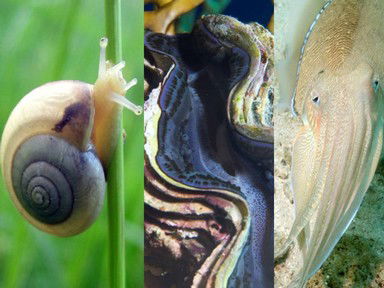
Spineless Wonders Trivia Quiz
The Unprecedented Diversity of Molluscs
The diversity of molluscs is absolutely wonderful. While there are seven or possibly eight classes, the main ones are gastropods, bivalves and cephalopods. You need to determine to which of these three classes the following twelve animals belong.
A classification quiz
by 1nn1.
Estimated time: 3 mins.
- Home
- »
- Quizzes
- »
- Animal Trivia
- »
- Invertebrates
- »
- Mollusks